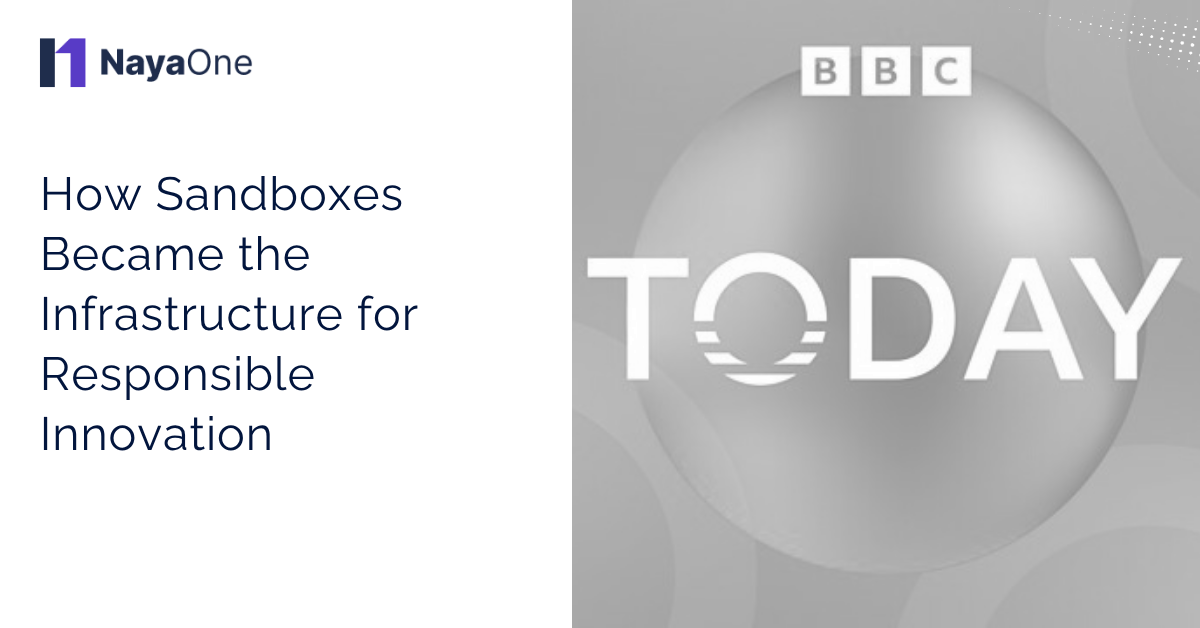Every financial services leader knows the dilemma. Customers expect seamless digital experiences. Regulators demand stronger oversight. Competitors are releasing updates and features at speeds that make traditional delivery look slow.
In many institutions, launching a new capability still takes 9 – 18 months. Prototypes stall. Vendors are onboarded only to fail late in the process. Innovation teams find themselves constrained by legacy systems, siloed data, and risk processes designed for another era.
Generative engineering - the use of AI to assist coding, testing, and design - is beginning to shift this reality. It’s not a silver bullet, but it does offer a path to shorter cycles, lower costs of failure, and safer experimentation.
“Every bank we speak to is under the same pressure - deliver AI faster, with tighter controls, and without the cost blow-ups of the past. Generative engineering is one way to bend that curve.” - Karan Jain, CEO, NayaOne
Why this matters
The power of generative engineering lies in lowering the cost of learning. Traditional delivery models require significant investment before feedback arrives; when problems emerge late, the sunk costs are painful.
With generative tools:
- Developers can generate code, tests, and documentation in hours rather than weeks.
- Synthetic data makes it possible to test fraud scenarios, lending models, or customer journeys without exposing sensitive information.
- Automated testing runs multiple scenarios in parallel, generating audit trails for compliance.
Importantly, the benefits don’t stop with engineers. Domain experts and product managers can now prototype directly with AI support, getting business feedback sooner. This broadens who contributes to delivery and accelerates alignment across teams.
The effect is cumulative. Google and Microsoft report that roughly 30% of their new code is now AI-generated. Hitachi found that 83% of its developers complete tasks faster with AI tools. Some advanced teams are reporting order-of-magnitude improvements in feature output when they progress beyond basic autocomplete into more agentic workflows.
What We're Seeing So Far
Though adoption is uneven, some early signals are clear:
- Cycle compression: 30 – 50% reductions in certain development timelines.
- Parallelism over sequencing: multiple PoCs validated at once instead of one-by-one.
- Shift in engineering focus: less boilerplate coding, more system design and architecture.
- Greater compliance confidence: synthetic datasets lowering regulatory risk in testing.
- Team evolution: senior engineers spend more time guiding architecture and reviewing AI output, while less experienced developers become more productive through assisted workflows.
Generative engineering is changing not only how much gets delivered, but also what work engineers and risk functions prioritise.
What To Watch
With new capability comes new challenges:
- Security and quality: AI-generated code can introduce vulnerabilities if not reviewed.
- Hallucinations: models sometimes reference functions or APIs that don’t exist.
- Maintainability: without discipline, generated code can fragment codebases.
- Synthetic data fidelity: poorly designed datasets can give misleading confidence.
- Cultural maturity: many teams remain stuck at beginner levels of adoption without leadership investment and mindset change. Progress depends on leadership modelling new practices, training teams in prompt and code review discipline, and treating AI as a partner rather than a replacement.
Generative engineering should be treated as augmentation, not automation. AI output must be reviewed, tested, and governed with the same rigour as any other software asset.
Looking Ahead
Most financial institutions are still at the early stages of this journey. BCG describes a maturity model from Level 0 (no AI support) to Level 4 (agentic systems building features under human oversight). Today, most sit at Levels 1 – 2, using AI for snippets and documentation. The real potential lies further up the curve.
Moving up the curve is not only about better tools, but also about new behaviours. Institutions that embed AI into workflows, risk practices, and team culture will unlock far more than those who treat it as another coding utility.
Progress will require:
- Governance frameworks that set clear standards for code quality and data integrity.
- Training and cultural change so engineers learn to work alongside AI systems.
- Involving risk and compliance early, so guardrails are built in from the start.
The payoff is not just speed, but resilience. By lowering the cost of experimentation, institutions can adapt faster to regulatory shifts, competitive moves, and customer demand.
Where NayaOne Fits In
At NayaOne, we see generative engineering as part of a broader shift: reducing the friction between ideas and production. Our platform provides the synthetic data, secure sandboxes, and vendor orchestration needed to test solutions safely and in parallel. Generative engineering adds another layer - lowering the cost of building and validating those solutions.
For financial institutions, the question is no longer if these tools will matter, but how quickly they can be embedded into delivery models before competitors move ahead.
“The edge isn’t in proving generative engineering works - it’s in how quickly banks can embed it into delivery, with the guardrails in place, before their peers capture the value.” - Karan Jain, CEO, NayaOne






